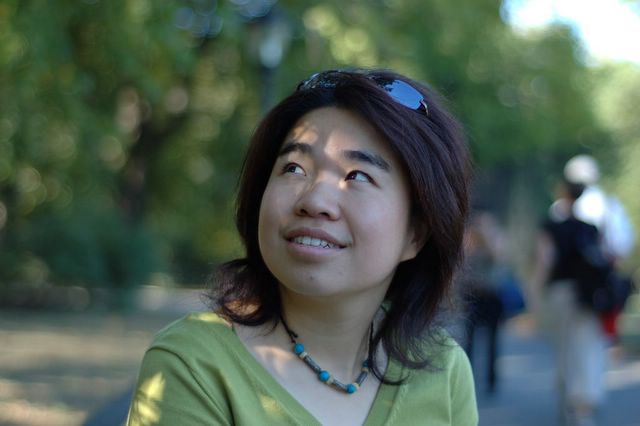
In Art’s Old Sanctuary, a High Priest of Film - Bergman died on July 30,2007
Ingmar Bergman (help·info) (IPA: ['ɪŋmar 'bærjman] in Swedish, but usually IPA: [ˈbɝgmən] in English) (July 14, 1918 – July 30, 2007) was a Swedish stage and film director. Ingmar Bergman found bleakness and despair as well as comedy and hope in his indelible explorations of the human condition. He is regarded as one of the great masters of modern cinema.[1]
Many filmmakers worldwide, including Americans Woody Allen and Robert Altman, the Danish director Lars Von Trier, the Russian director Andrei Tarkovsky and the Japanese director Akira Kurosawa, have cited the work of Bergman as a major influence on their work.
“Not a day has gone by in my life when I haven’t thought about death,” Mr. Bergman mused in
“Bergman Island,” a recent, extraordinarily intimate documentary portrait, filmed on the island of Faro, where he lived in semi-isolation for four decades. The image of a chess game, he said, was inspired by a painting in a church he visited as a boy with his father. Until many decades later, when he underwent anesthesia that left him unconscious for several hours, he harbored “an insane fear” of death. Losing, then regaining, consciousness partially alleviated that fear, which seeps into the core of many of his finest films.
Today the religion of high art that dominated the 1950s and ’60s seems increasingly quaint and provincial. The longstanding belief that humans are born with singular psyches and souls is being superseded by an emerging new ideal: the human as technologically perfectible machine. The culture of the soul — of Freud and Marx and, yes, Bergman — has been overtaken by the culture of the body. Biotechnology leads the shaky way into the future, and pseudo-immortality, through cloning, is in sight. Who needs a soul if the self is technologically mutable? For that matter, who needs art?
That may be why Mr. Bergman’s spiritual malaise seems less relevant than his flesh-and-blood experience. No filmmaker has explored relationships between men and women with such depth and passion. His achievement is inseparable from that of the extraordinary actresses — like Bibi Andersson, Harriet Andersson and, most of all,
Liv Ullmann (with whom he made 10 films) — who people his work and who embody both the women in his life and his own feminine side.
===========================================

Michelangelo Antonioni, 94, Italian Director, Dies on July 30, 2007
Michelangelo Antonioni was born in
Ferrara,
Emilia Romagna. Upon graduation from the
University of Bologna with a degree in
economics, he started writing for the local Ferrara newspaper Il Corriere Padano in
1935 as a film journalist. In
1940, Antonioni moved to
Rome, where he worked for Cinema, the official
Fascist film magazine edited by
Benito Mussolini's son Vittorio. However, Antonioni was fired a few months afterward. Later that year he enrolled at the Centro Sperimentale di Cinematografia to study film technique.
Mr. Antonioni is probably best known for “Blowup,” a 1966 drama set in Swinging London about a fashion photographer who comes to believe that a photograph he took of two lovers in a public park also shows, hidden in the background, evidence of a murder. But his true, lasting contribution to cinema resides in an earlier trilogy —
“L’Avventura” in 1959,
“La Notte” in 1960 and “L’Eclisse” in 1962 — which explores the filmmaker’s tormented central vision that people had become emotionally unglued from one another.
In a generation of rule-breakers, Mr. Antonioni was one of the most subversive and venerated. He challenged moviegoers with an intense focus on intentionally vague characters and a disdain for such mainstream conventions as plot, pacing and clarity. He would raise questions and never answer them, have his characters act in self-destructive ways and fail to explain why, and hold his shots so long that the actors sometimes slipped out of character.
My subjects are, in a very general sense, autobiographical,” he once wrote. “The story is first built through discussions with a collaborator. In the case of “L’Eclisse,” the discussions went on for four months. The writing was then done, by myself, taking perhaps fifteen days. My scripts are not formal screenplays, but rather dialogue for the actors and a series of notes to the director. When shooting begins, there is invariably a great amount of changing. When I go on the set of a scene, I insist on remaining alone for at least twenty minutes. I have no preconceived ideas of how the scene should be done, but wait instead for the ideas to come that will tell me how to begin.”
The world of an Antonioni film “is a world of people alienated from one another,” wrote Andrew Turner in his book “World Film Directors” (1968). “Their actions have no meaning or coherence, and even the most fundamental of emotions, love, seems unsustainable.’
In 1943, Mr. Antonioni returned to Ferrara and found a local merchant willing to bankroll his first film, a documentary called “Gente del Po” (People of the Po Valley), about the wretched lives of local fishermen. The German occupying forces destroyed much of the footage, though a few scraps survived and became a nine-minute curtain-raiser at the 1947 Venice Film Festival for
Alfred Hitchcock’s
“Spellbound.”
==============================================================
IF I HAVE ALL THE TIME IN THE WORLD, I WILL WATCH THEIR FILMS ONE AFTER ONE. AND JUST TO SEE HOW THEY TORTURE ME ADN HOW I SURVIVE THE MANY DEATH THEY DISCUSSED.
HOW STRANGE THAT I TALKED WITH HUGH ABOUT ANTONIONI'S BLOWUP AT MOMA TWO DAYS BEFORE HIS DEATH. PEOPLE COMES AND PEOPLE GOES, EVEN THEY WERE THE BIG NAMES WHO DEFINED OUR PERSPECTIVE OF THE WORLD, IN LARGE AND SMALL WAYS.




没有评论:
发表评论